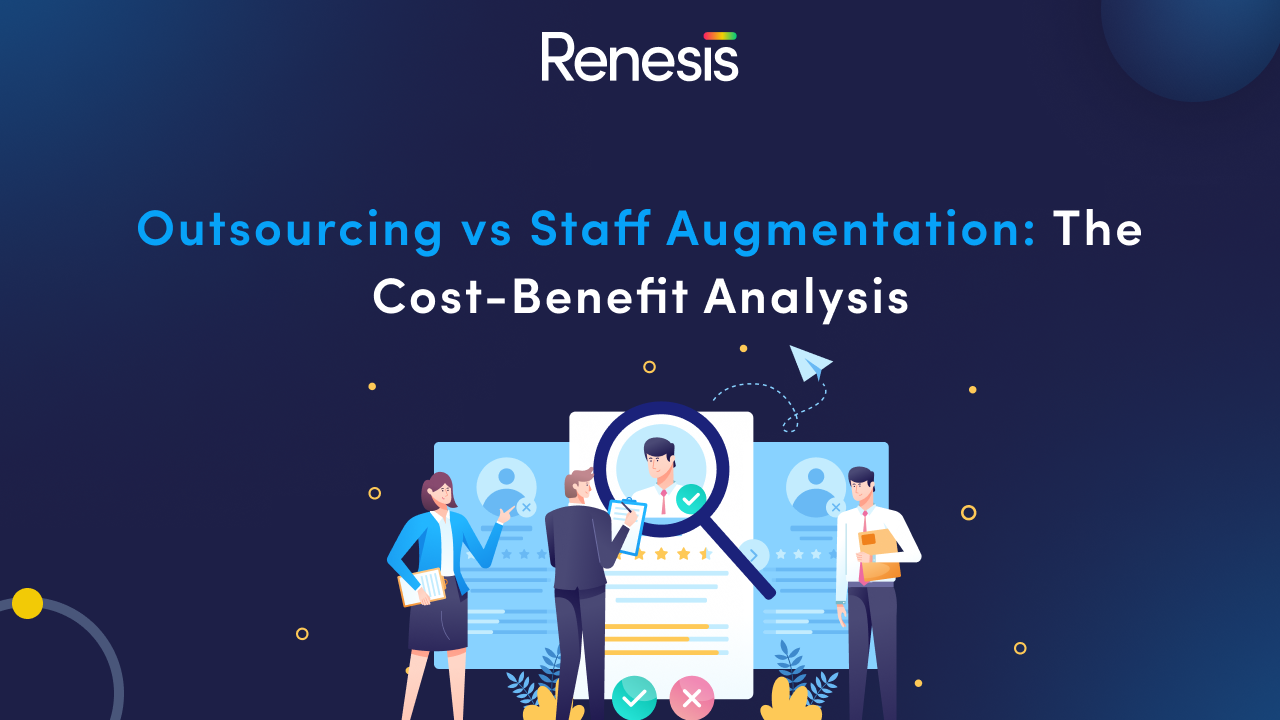Outsourcing vs Staff Augmentation: The Cost-Benefit Analysis
Most business owners have a strong desire to increase their profits. But, just like any other good idea, the time to action is crucial. You need help with an important project, but you don’t want to permanently add resources to your team. Your options? Hiring a freelancer, outsourcing a task, or staff augmentation. They all have their differences and pros and cons, so it can be difficult to decide which one is best for your business. That’s why we’re here: To break down the cost-benefit analysis of outsourcing vs staff augmentation.
The trend that has emerged over the past decade is one where businesses are now looking for ways to save costs. In some cases, this decrease in expenses can lead to increases in profitability. One of the best ways of accomplishing this is by outsourcing. You might be surprised that the benefits of outsourcing vs hiring more staff are actually more significant than any other business decision related with cost and value of money.
But, depending on how you look at it, there’s also an opposing force continuing its influence on businesses throughout the world: Staff Augmentation.
In this article, we’ll help you perform a cost-benefit analysis for each option so you can make an informed decision about what will work best for your business. Let’s dive in!
Understanding the Basic Differences Between Outsourcing and Staff Augmentation
Have you been considering whether you should outsource or augment your staff? The truth is, both offer different benefits, and it’s important to understand the key differences between each before making your decision. To start, outsourcing involves hiring third-party companies to complete specific tasks for your business. This usually comes in the form of off-site contractors who are not actually a part of your staff and work on an on-demand basis.
Staff augmentation, on the other hand, involves hiring additional personnel that becomes a part of your team. They are typically brought in to fill skills gaps and supplement existing roles. Unlike outsourced contractors, these individuals are given more job security and become part of the company culture since they report directly to the organization versus an outside vendor.
What is Staff Augmentation?
Staff augmentation refers to the process of bringing in external talent on a project-by-project basis to support an organization’s existing team. This approach is often used to address specific skill gaps or to increase the team’s capacity during peak periods. The external talent is integrated into the organization and works alongside the internal team, providing additional support and expertise as needed.
Cost Comparison Between Outsourcing and Staff Augmentation
When it comes to cost, there’s no clear-cut answer as to which is more economical: outsourcing or staff augmentation. Here’s what you need to look into:
Outsourcing costs
Outsourcing costs normally consist of a fixed fee for the service provider and the service itself. That’s why you should protect yourself from any sudden cost increases and make sure that the contract clearly outlines how much the service will cost and what responsibilities the provider will take in return.
Staff augmentation costs
Staff augmentation costs can involve salaries, benefits, and equipment needed for an employee to work effectively on your project, with an additional overhead of managing them from hiring to training. This may be less expensive in the short term but can be more expensive in the long run as contracts usually last between one month and one year.
The choice between outsourcing and staff augmentation really depends on what you need. If you need a specific task completed quickly, then outsourcing might be the right fit for your business needs. On the other hand staff augmentation could be ideal if a part-time team member or freelancer is needed for a longer period of time, such as providing technical support or working on online marketing tasks.
Cost-Benefit Analysis of Outsourcing
Outsourcing can provide organizations with numerous benefits, including cost savings, increased efficiency, and improved quality.
Cost savings: Outsourcing allows organizations to tap into the expertise and resources of third-party providers, often at a lower cost than hiring additional staff. The provider is responsible for all of the costs associated with the outsourced function, including salaries, benefits, and equipment.
Increased efficiency: Outsourcing also allows organizations to streamline their operations, freeing up resources and increasing efficiency. By transferring a function to a third-party provider, organizations can focus on their core competencies and improve their overall performance.
Improved quality: Outsourcing can also result in improved quality of the outsourced function, as the third-party provider typically has the expertise and resources to deliver high-quality services and products.
Outsourcing with Renesis Tech
Renesis Tech is a leading provider of outsourcing services, helping organizations to streamline their operations and increase efficiency. Our team of experts has extensive experience in a variety of industries, including IT, finance, and customer service.
Whether you’re looking to outsource a specific function or your entire operation, Renesis Tech can help. Our team will work with you to understand your goals and develop a customized solution that meets your specific needs.
From there, we’ll manage the entire process, from implementation to delivery, to ensure that you receive the best possible results. Let’s talk to our experts today!










